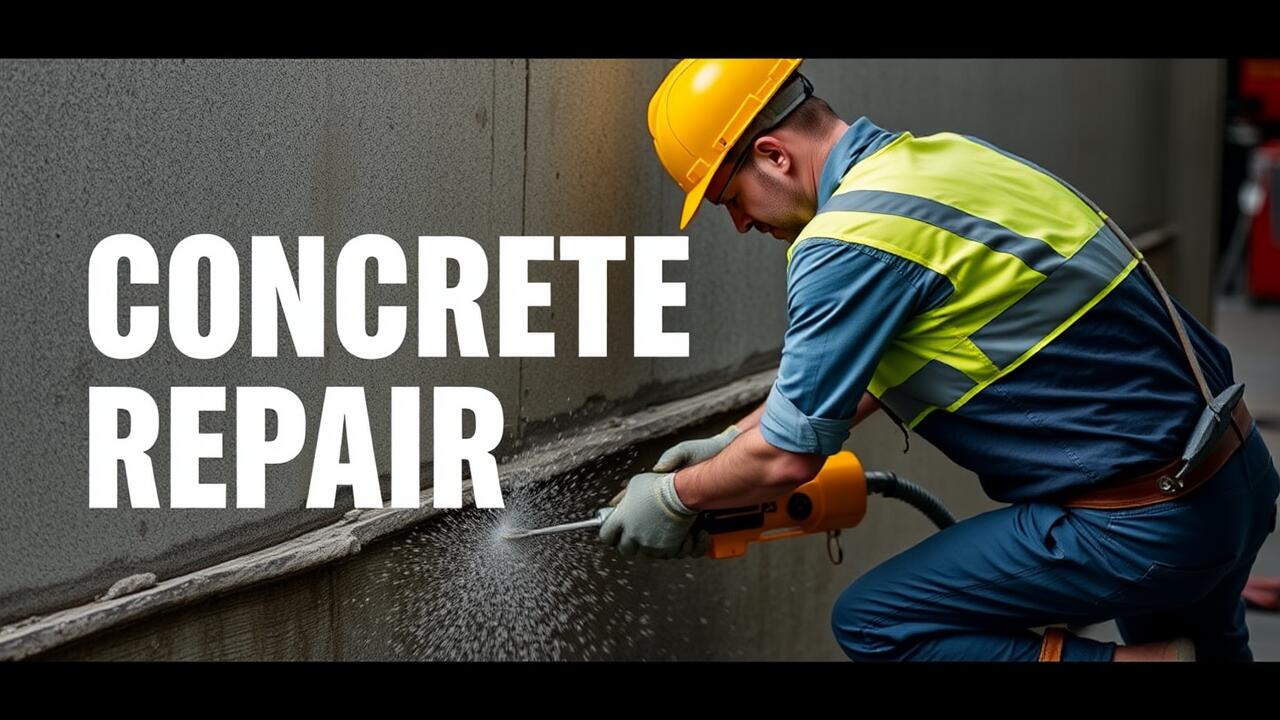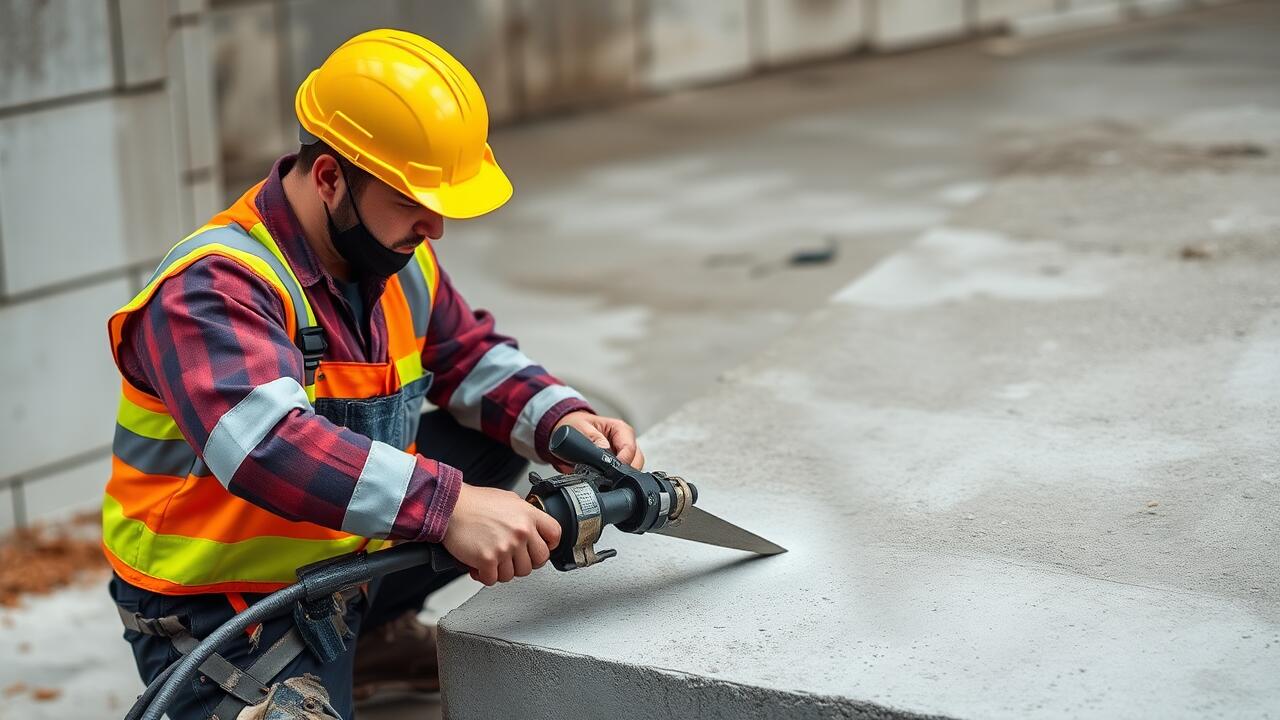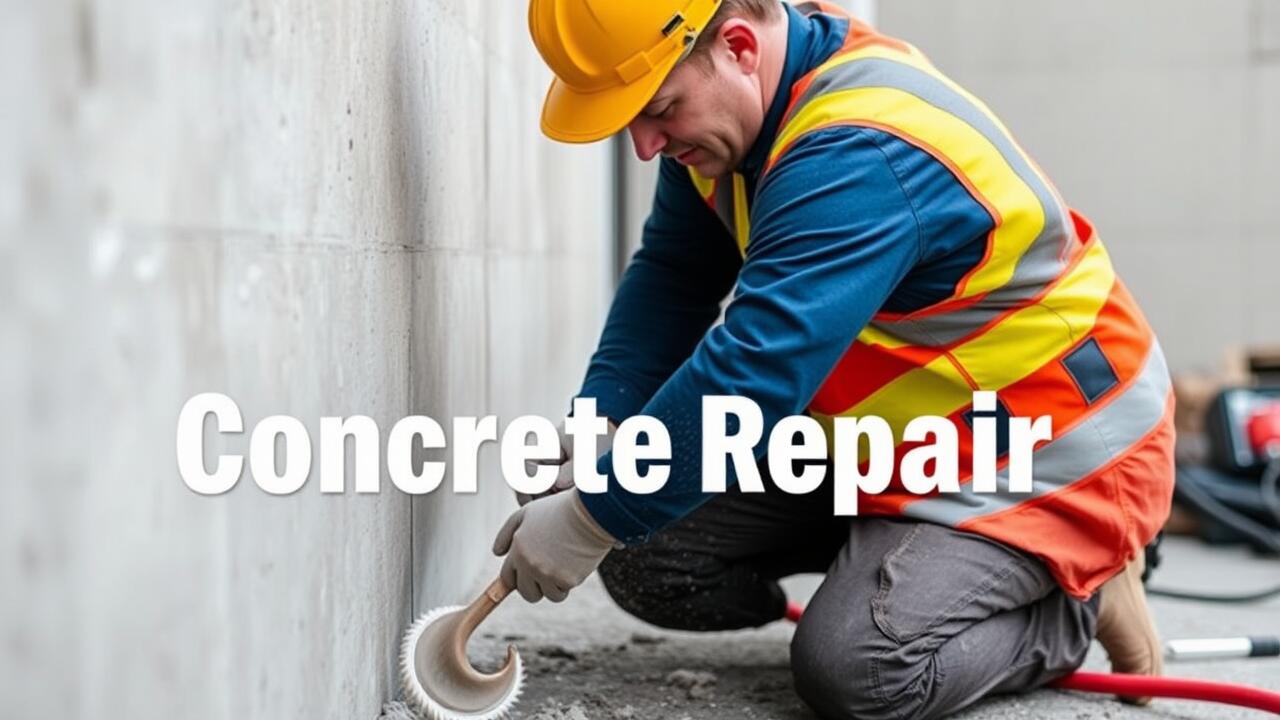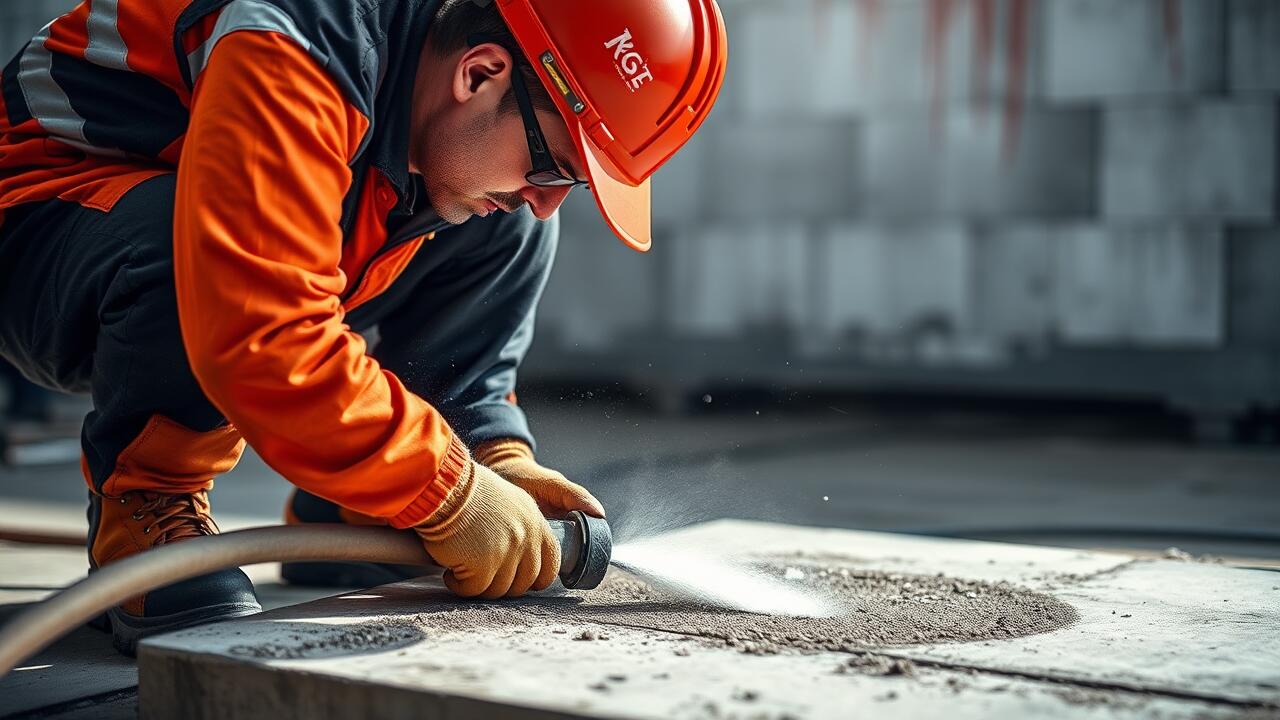
Safety Precautions During Repair
When undertaking concrete repair tasks, safety must always be a priority. Proper personal protective equipment (PPE) is essential. This includes gloves, goggles, and a mask to guard against dust and chemical exposure. Sturdy shoes should be worn to protect against falling tools and materials. It’s also important to ensure that the work area has adequate ventilation, especially when using chemical injection materials. Practicing these safety measures helps mitigate risks associated with concrete repair processes.
In addition to personal safety gear, proper handling and storage of repair materials cannot be overlooked. Keep all chemicals clearly labeled and stored away from direct sunlight and extreme temperatures. Maintaining a clean workspace reduces the likelihood of accidents. Before commencing work on any project, like Concrete Repair in Estrella, Phoenix, reviewing safety data sheets for all materials used can provide vital information on hazards and emergency procedures. Adhering to these precautions will not only enhance safety but also improve work efficiency.
Essential Guidelines for Working with Chemicals
When engaging in crack injection techniques for concrete repair, it is crucial to prioritize safety while handling chemicals. Always wear appropriate personal protective equipment, such as gloves, goggles, and respirators, to minimize exposure to harmful substances. Ensure that the workspace is well-ventilated to reduce the buildup of fumes. Familiarize yourself with the safety data sheets (SDS) for each chemical used. This information provides essential details about potential hazards, handling procedures, and emergency measures.
Proper storage of chemicals is equally important. Keep all substances in their original containers and ensure they are clearly labeled. Store them in a cool, dry place away from direct sunlight and incompatible materials. When conducting Concrete Repair in Laveen, Phoenix, it is advisable to adhere to local regulations regarding chemical disposal. Following these guidelines helps maintain a safe working environment and contributes to the overall success of the repair project.
Curing Time for Injected Cracks
The curing time for injected cracks in concrete is a critical factor that impacts the overall effectiveness of the repair. Typically, the curing process can vary depending on the type of material used for injection, environmental conditions, and the size of the crack. As the substance cures, it forms a bond with the surrounding concrete, which is essential for restoring structural integrity and preventing further damage. In regions such as Laveen, Phoenix, where temperatures can fluctuate, it's particularly important to monitor curing conditions to ensure optimal results.
Various factors influence the duration of curing. Temperature and humidity levels play significant roles; higher temperatures generally speed up the curing process, while high humidity can have a stabilizing effect. The thickness of the injected material also contributes to how long it will take to set properly. For effective Concrete Repair in Laveen, Phoenix, understanding these variables and adjusting accordingly can significantly enhance the longevity of the repair work.
Factors Affecting Cure Duration
Curing time for injected cracks can vary significantly based on several factors. The type of resin or epoxy used plays a crucial role, as different formulations have distinct drying and setting times. Environmental conditions, such as temperature and humidity, also influence how quickly the material cures. Warm, dry conditions typically expedite the curing process, while colder or more humid environments can lead to slower setting times.
The substrate's moisture content is another key factor affecting cure duration. A damp substrate can prevent proper adhesion and prolong the curing process. Furthermore, the thickness of the injected material impacts curing times; thicker applications generally require more time to set. For those considering Concrete Repair in Laveen, Phoenix, it is essential to account for these variables to ensure a successful and durable repair outcome.
Post-Repair Inspection
Post-repair inspection plays a critical role in ensuring the success of any concrete repair job. After the injection process is complete, it is essential to assess the treated areas for any signs of leakage or failure. This initial evaluation should include checking for visible cracks or imperfections that may indicate a need for further intervention. In regions like Central City, Phoenix, where concrete structures endure various environmental challenges, a thorough inspection helps determine if the repair meets the required standards for durability.
Evaluating the effectiveness of the repair involves more than a simple visual check. Technicians should perform additional tests, such as moisture assessments, to detect any underlying issues that could compromise the integrity of the repaired concrete. Documenting the inspection findings can provide valuable insights into the performance of the repair materials used. For homeowners and businesses in Central City, Phoenix, this step ensures not only the longevity of the concrete but also the safety and structural soundness of their properties.
Evaluating the Effectiveness of the Repair
After completing the crack injection process, assessing the effectiveness of the repair is crucial. This evaluation typically involves visual inspection of the repaired area to check for signs of leakage or any remaining cracks. It's important to monitor the vicinity of the injection points for any changes over time. A successful repair will show no further signs of deterioration, and the repaired area should closely match the surrounding concrete's surface appearance.
For projects like Concrete Repair in Laveen, Phoenix, professionals often use specialized tools to test the integrity of the repair. Pressure testing can help identify weaknesses within the injected material. Additionally, surface hardness testing ensures that the repaired concrete meets strength benchmarks. Conducting these evaluations helps guarantee that the repair not only addresses immediate issues but also contributes to the long-term durability of the structure.
FAQS
What are crack injection techniques?
Crack injection techniques involve the use of specialized materials, such as epoxy or polyurethane, to fill and seal cracks in concrete structures, preventing further damage and water infiltration.
What safety precautions should I take while performing crack injections?
It's essential to wear appropriate personal protective equipment (PPE), such as gloves, goggles, and a mask. Additionally, ensure proper ventilation in the work area and follow all safety guidelines for handling chemicals.
How long does it take for injected cracks to cure?
Curing time for injected cracks can vary based on several factors, including the type of material used, environmental conditions, and the size of the crack. Generally, it can take anywhere from a few hours to several days for a complete cure.
What factors can affect the cure duration of crack injection materials?
Factors affecting cure duration include temperature, humidity, the type of injection material, and the depth and width of the crack being repaired.
How can I evaluate the effectiveness of the crack repair?
Post-repair inspection should include checking for any signs of leakage, inspecting the surface for any remaining cracks or delaminations, and ensuring that the repair material has adhered properly to the concrete.




